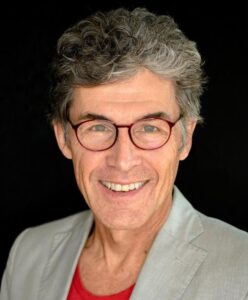 2 min read December 2021 — Founder and CEO Ken LaRoe of Climate First Bank describes himself as a “rabid environmentalist and a rabid capitalist.” In an interview with Invest:, LaRoe discussed the importance of integrating sustainability and financial initiatives, the green trends where the bank wants to make an impact and his hopeful outlook for the green banking sector.
2 min read December 2021 — Founder and CEO Ken LaRoe of Climate First Bank describes himself as a “rabid environmentalist and a rabid capitalist.” In an interview with Invest:, LaRoe discussed the importance of integrating sustainability and financial initiatives, the green trends where the bank wants to make an impact and his hopeful outlook for the green banking sector.
What makes St. Petersburg the ideal market for the bank’s flagship location?
We conducted a market analysis and had various conversations when deciding to locate in the St. Petersburg area. The community has the perfect ethos and culture for what we desire to accomplish, which are the primary reasons why we chose the area. The Tampa region is a vibrant and dynamic market that hosts a younger generation, which is an attractive aspect of the area as well. We recently purchased a permanent building in St. Petersburg, which we will convert to a LEED certified and net-zero energy building. There is a large amount of business flooding into the area, which is wonderful to hear and witness.
What differentiates Climate First Bank from competitors in the region?
We are the only bank in Florida that is a legal benefits corporation. We are also the only climate-focused bank in the world, which is directly evident in our name. It immediately grabs your attention and defines who we are. The name is polarizing, which is a large part of the reason why we chose it as it informs everything we do and plan to do in the future. Often, initiatives can compete with one another when you attempt to have separate objectives that address sustainability and the environment alongside financial goals and business objectives. It’s important that they’re integrated with one another rather than separate so the two aren’t in conflict.
What sustainability trends are you focused on?
The state of Florida is real estate-centric, so our portfolio is largely centered on commercial real estate and there is a large need to address it. About 30% of the energy consumed in the United States is through buildings, so we have a clearly defined program that relates to sustainable buildings. Sustainability usually isn’t a focus for most real estate developers. The regulations regarding the code for buildings have become more sustainable but there are still a few holes within the construction industry that lack supervision, making it more difficult to enact green initiatives effectively. We do offer incentives and interest rates to term for those who participate in the program.
One of the biggest items that we address are solar panels. We have a solar loan program that we have developed and are in the process of digitizing. We’re receiving many requests regarding fairly large commercial solar projects. We will shift our focus from commercial real estate after three years or so, which will allow us to expand our ways of harnessing different types of sustainable energy sources.
Which sectors are seeking capital assistance in pursuit of sustainability initiatives?
We have a large portfolio of different companies and partnerships that seek capital assistance from us in particular. In a deal with a convenience store gas station, for example, we were able to propose a green initiative in an effort to make the gas station itself more sustainable. They agreed to install solar power and electric vehicle charging stations and we lent them 100% of the funds to cover the costs for the roof and solar power. When they sought our help, we were able to transition their building into a sustainable initiative that not only benefits their business in the long run but the planet as well. We do have a system that categorizes the industries in which we will work, depending on how their industry and business is in line with our mission.
What is your outlook for the green banking sector?
It took time for green banking to become a topic of conversation in the industry. It wasn’t until 2017 that the term ESG (environmental, social and governance) entered the common vernacular. When First Green Bank began, there were few banks that were impact- and sustainability-focused or values-based. We were the 12th member of the Global Alliance for Banking Values, so it has been a drastic change.
I hope that we become a model that others will want to emulate. With First Green Bank, I hoped to create an owner’s manual of sorts for value-space banks in an effort to help those wanting to convert or charter as a value-space bank. We were successful in bringing banks into the fold, so we’re hoping to grow and expand that with Climate First Bank. It’s important to identify the banks that have taken actions, creating values as a value-space bank and bringing them into the fold.
How do your returns on your portfolio compare to traditional banks?
I believe that if we don’t deliver financial performance in the Top 10% of all banks, no one will take us seriously. It’s important that we’re able to deliver. I’m beholden to all shareholders who have invested in us, and I’m proud to deliver strong returns to our investors. I’m proud that we sold Florida Choice, for example, at the highest multiple in the history of Florida. We’re committed to delivering at a high level to provide high-returns for ourselves and our shareholders.
For more information, visit:
